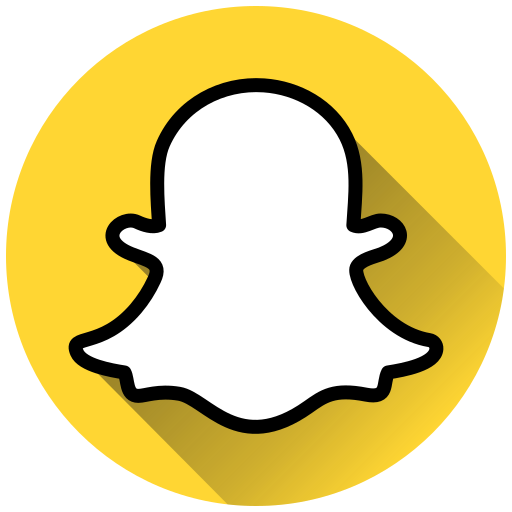Snapchat Planets
Explained
Snapchat Planets is the buzzing craze that has taken the world of social media by storm, and everyone is talking about it nowadays. The funniest thing is that most users are excited about this trending feature, but only a few actually know what the order of Snapchat planets means or what type of information you can discover from your own solar system of friends.
Snapchat, the popular app among Gen Z, frequently adds new features to keep its user experience fresh and exciting. Among these upgrades, the Friend Solar System—also called Snapchat Planets—stands out as an innovative special feature exclusively for Snapchat Plus paid subscriptions users.
This article will help you understand why this feature is so popular by reading through all the details, meanings, and the complete Snapchat planets order without wasting your time. For readers’ convenience, I’ve structured this guide in a way that covers everything you need, and there’s even a FAQ section to clear up any doubts you might have.
What is the Snapchat Solar System?
The Snapchat Solar System is a friendship ranking system that ranks your top eight friends as planets orbiting around you, the “Sun.” It’s a creative way to show how close you are to your friends based on how often you snap, chat, or maintain streaks.

Think of it as a private way to understand your digital friendships better, without using typical labels like “best friend” or “close friend.” Launched as part of Snapchat Plus in 2022, this feature adds a playful, cosmic twist to the app’s social dynamics, but it’s not without its quirks, as we’ll explore later.
How Does the Snapchat Planet System Work?
The Snapchat Planet System assigns each of your top eight friends a planet based based on how often you exchange snaps, like those marked RS, and chats. You’re the Sun, and your friends are planets, with closer planets indicating more frequent communication. The order mirrors our real solar system: Mercury is your closest friend, Venus is second, and so on, up to Neptune as your eighth.
Rankings shift dynamically as your interactions change, so someone who’s your Mercury today might drop to Earth if you stop snapping daily. Only you can see your own Solar System, keeping it private, but you can spot the Snapchat green dot to see who’s active. You can also check your planet in their system with Snapchat Plus.
The Meaning Behind Each Snapchat Planet
Each planet in the Snapchat Solar System has a unique meaning, tied to your friendship’s strength and visualized with colorful Bitmojis and emojis. Here’s what each one represents, based on my analysis of the feature and user experiences.

Mercury – Your Closest Friend
This is your ultimate Snapchat bestie! You’re always Snapping each other, keeping streaks alive for days, and chatting late into the night. It’s like you live on each other’s phones! Mercury is the closest planet to the sun, just like this friend is the closest from your friends list in your Snapchat world.
You will see their Bitmoji, which is a fun cartoon version of them, with lots of bright red heart emojis around it. This means you are super close and always chatting or snapping pictures together. The snapchat planets orders visual makes this crystal clear.
Venus – Second Closest Friend
Venus represents your second-closest friend, someone you connect with frequently but not as intensely as Mercury. Their Bitmoji shows on a light brown planet with yellow, pink, and blue hearts, reflecting a warm, emotional bond. You probably share laughs and personal snaps, making this friendship vibrant and close.
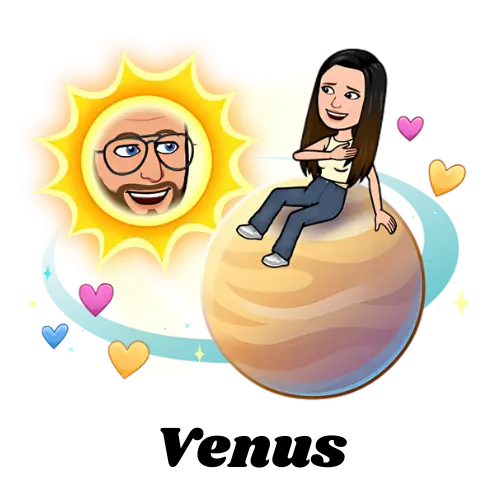

Earth – Third Closest Friend
Earth is your third-best friend, a solid part of your Snapchat circle. Their Bitmoji appears on a blue-and-green planet with a moon, stars, and red hearts, evoking stability. You might chat several times a week with engaged, meaningful conversations that keep you connected.
Mars – Fourth Closest Friend
It is the fourth planet which signifies your fourth-closest friend. Their Bitmoji sits on a red planet with blue and pink hearts and yellow stars, hinting at a fun but less frequent connection. You likely snap a few times a week, enjoying lighthearted moments when you connect.
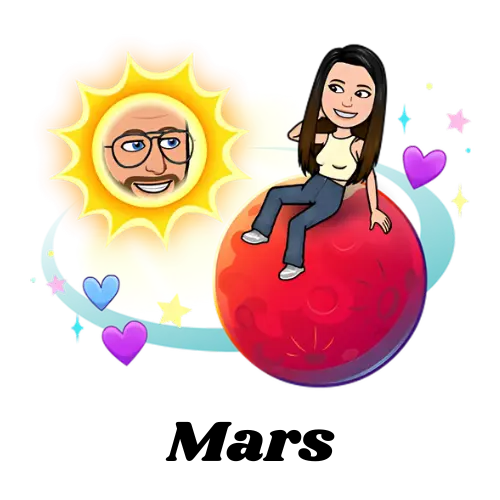

Jupiter – Fifth Closest Friend
Jupiter is the midpoint in the Snapchat planet order. Their Bitmoji appears on an orange planet with stars, reflecting a friendship with less regular contact, maybe weekly chats or short streaks. This friend brings a big personality, adding fun to your Snapchat feed when you interact.
Saturn – Sixth Closest Friend
It is your sixth-best friend, depicted on an orange planet with rings and stars. This friend is steady and reliable, but you may only chat sporadically every other week. Their Bitmoji suggests a meaningful connection despite the distance, like someone you trust for advice.

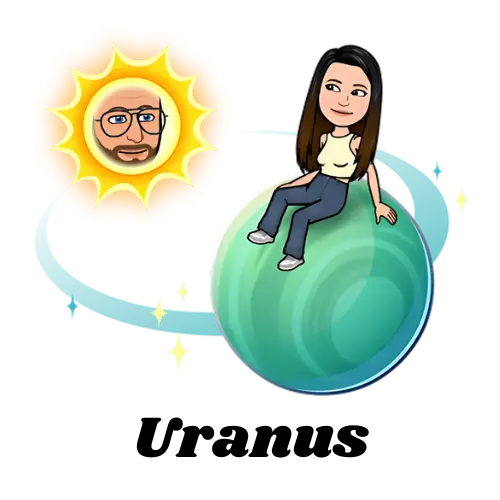
Uranus – Seventh Closest Friend
Uranus, the seventh planet, marks your seventh-closest friend. Shown on a sea-green planet with no hearts, their Bitmoji indicates infrequent contact, maybe monthly snaps or chats. This friend offers a unique perspective, sparking insightful conversations when you do connect.
Neptune – Eighth Closest Friend
Neptune, the farthest planet in the solar system, is your eighth-best friend. Their Bitmoji appears on a lonely blue planet with a blue star, symbolizing a distant connection. You might rarely snap, perhaps with a childhood friend or old classmate, but the bond still holds nostalgic value.
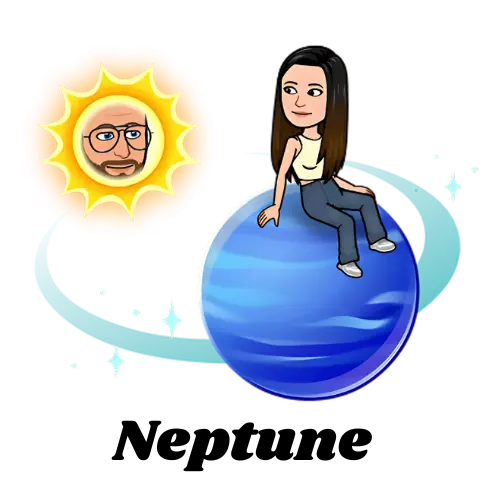
Detailed Explanation of the Snapchat Planet Order
The Snapchat Planet order follows the original solar system’s sequence: Mercury, Venus, Earth, Mars, Jupiter, Saturn, Uranus, Neptune. Each planet corresponds to your top eight friends, ranked by interaction frequency. Mercury, being closest to you (the Sun), is your most active friend, while Neptune, the farthest, is your least active among the top eight.
Rankings aren’t fixed; they shift as you snap more or less with someone. For example, if you start chatting daily with your Earth friend, they could climb to Venus or Mercury. This dynamic system reflects real-time friendship dynamics, making it both engaging and fluid.
Read Also: What Does the Snapchat Map Mean? Explained (2025)
How to Check Your Planet Status on Snapchat?
Are you curious about which planet you are in a friend’s Solar System? It’s simple, but both you and your friend need Snapchat Plus. Here’s how:
- Open Snapchat and go to your friend’s profile by searching for their username or swiping left from the camera screen.
- Look for a “Best Friends” or “Friends” badge with a gold outline below their username. “Best Friends” shows you’re both ranked in each other’s top eight, while “Friends” means you’re on their list, but they’re not on yours.
- Tap the badge to see your planet. For example, if you’re on a red planet with hearts, you’re their Mercury (their closest friend).
If you don’t see a badge, either they’re not a Snapchat Plus user, or you’re not in their top eight.
How to Enable or Disable the Snapchat Solar System Feature?
The Solar System feature is disabled by default for new Snapchat Plus subscribers, so you’ll need to turn it on manually. Here’s how to manage it.
How to Enable:
- Open Snapchat and tap your profile icon in the top-left corner.
- Tap “Snapchat+” to access the feature management page.
- Find “Solar System” and toggle it on. You’ll now see planet badges on your friends’ profiles.
How to Disable:
- Open Snapchat+ settings and apply the same steps there.
- Toggle “Solar System” off. This hides the feature, and planet badges will disappear from profiles.
You can switch it on or off anytime, giving you control over whether you want to see these rankings.
Read Also: How to Use Shazam On Snapchat
Snapchat Plus Subscription Pricing and Benefits
Snapchat+ is a paid upgrade that gives users access to premium features, including the Solar System, story rewatch counts, custom notification sounds, and more. Pricing varies slightly by region but usually starts around $3.99 per month.
| Country | One Month | Six Months | One Year |
|---|---|---|---|
| United States | $3.99 | $21.99 | $39.99 |
| United Kingdom | £3.99 | £21.99 | £39.99 |
| India | ₹49 | ₹294 | ₹588 |
As of 2025, it has over 9 million users globally, reflecting its popularity among Gen Z.
Snapchat Plus Benefits:
✔ Snapchat Planets ranking
✔ Story rewatch count
✔ Custom app icons
✔ Priority replies on stories
✔ Exclusive Snapchat+ badge
How to Subscribe to Snapchat Plus?
Ready to join Snapchat Plus? Here’s how:
- Open Snapchat and tap your profile icon.
- Tap “Snapchat+” in the settings menu.
- Select the monthly ($3.99) or annual ($29.99) plan.
- Follow the payment prompts via Google Play or Apple App Store to activate your subscription.
Check for introductory offers, as Snapchat sometimes discounts the first month.
Read Also: What Does RS Mean on Snapchat?
Upsides and Downsides of Snapchat Plus Planets
Upsides:
✔ Helps users track their closest friends easily.
✔ Provides personalized engagement rankings.
✔ Encourages more interaction between top-ranked friends.
Downsides:
✖ Only available for Snapchat Plus users.
✖ Rankings change frequently, which can be confusing.
✖ Privacy concerns as some users may not want others to track interactions.
FAQs
Conclusion
Snapchat Planets bring a cosmic twist to tracking your top friends in 2025, making every snap feel like a step closer to your besties. Don’t sweat the rankings; focus on the fun of staying connected.
Having explored social media trends for years, I’ve seen features like this spark joy when you lean into real bonds. Snap back your Venus or Mercury today to keep those friendships tight!
